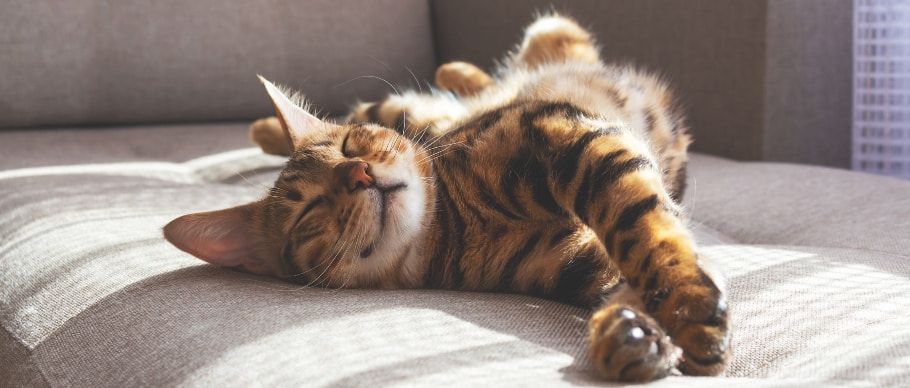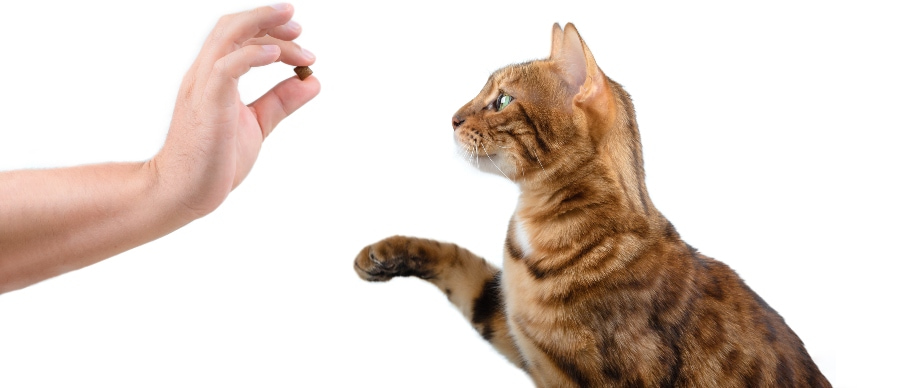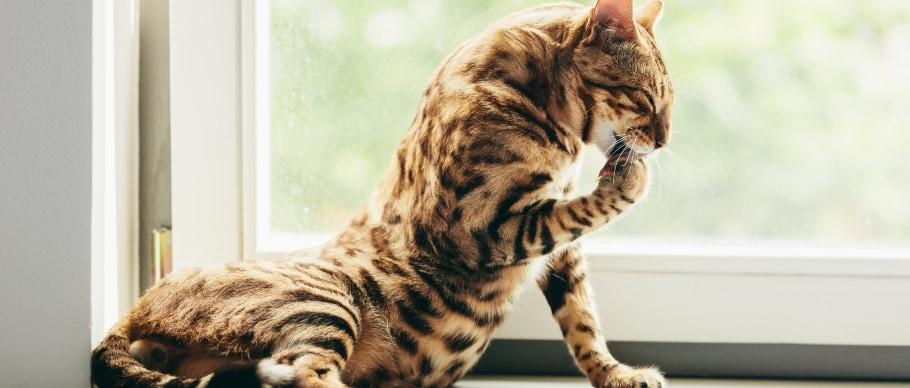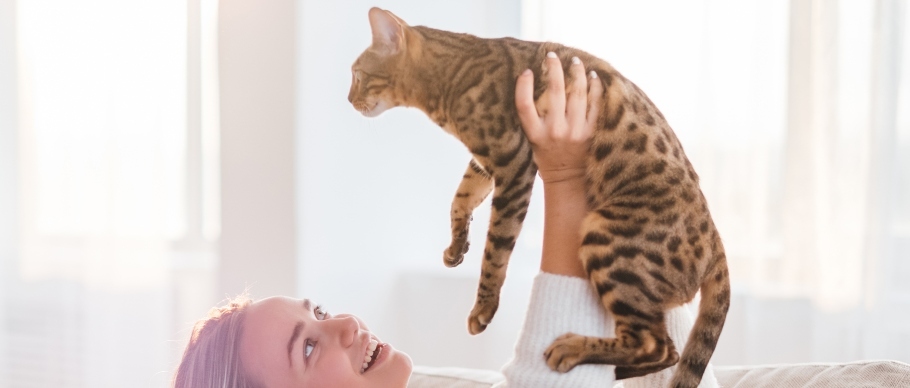Featured Feline: Bengal Cat – Traits, Temperament, & Trivia
Meet the Bengal cat! Lovingly described as a miniature leopard or tiny tiger for its distinctly exotic markings and piercing green eyes, this breed has been growing in popularity since the 1970s! Let’s get to know this striking kitty!
Size: Medium–Large
Weight: 8–20 lbs
Hypoallergenic: No
Eyes: Green or copper
Coat Length: Short
Coat Pattern: Leopard-like pattern, varying horizontal dark spots, thick orange-tan base
Personality: Intelligent, adventurous, playful
Origin: USA
History
The Bengal cat’s ancestry is one of the most diverse, stretching back to the jungles of Southeast Asia! The Asian leopard cat, also referred to as the ALC or leopard cat, holds the key to the Bengal’s unique, wild appearance.
Not to be confused with the African leopard (there’s a 200-pound difference!), these shy, nocturnal hunters weigh in at only 10 pounds. Despite their “wild” appearance, the ALC is a creature of caution and no more vicious than their Bengal cat descendant.
Today, the Bengal cat is a playful and friendly member of households across the world.

Temperament and Purrrsonality
Cat lovers are initially drawn to the Bengal cat for their captivating beauty and exotic features. Yet, it's their playful spirit, intelligence, and underlying alertness that make them wonderful companions for active pet parents!
Rooted in the survival instincts inherited from their ALC ancestor, Bengal cats developed a cautious reserve to navigate the wild and stay vigilant against predators. Although this shyness is exhibited in their domestic lives, it’s offset by their lively and adventurous nature.
Getting your cat to like you, let alone feel comfortable in your home, can be tricky no matter the breed. Early socialization is crucial to ensure Bengal cats adapt well to children and other pets.
Energy Level
As with any cat, energy levels can vary. However, the Bengal is generally a quick and energetic breed—don't be surprised if they get the cat zoomies often! With their high-spirited nature and consistent need for mental stimulation, Bengal cats respond best to ample playtime and space to run, jump, and hide. Vertical structures like cat trees are a must, and the Bengal is often recognized as one of the few cat breeds that like water!

Training
Bengal cats are known for their intelligence and aptitude to catch on quickly to human commands. With patience and a proper reward system, Bengals can be trained to perform tricks just like a dog! Some cat parents even teach their Bengals to walk on a leash in public settings, such as the park or a hiking trail. No matter what skill you’re teaching, keep training sessions short and fun.

Grooming and Coat Care
The Bengal cat’s coat is one of their most captivating features. While a common tabby cat or American Shorthair only have two colors mixed in a vague bull’s eye swirl, the Bengal can have several colors and shades featuring stunning rosette markings.
Even with their magnificent coats, very little special care or grooming efforts are needed—especially because they’re a cat breed that doesn’t shed much! Some find that wiping this cat’s short fur with a damp cloth or grooming wipe during the fall and spring helps remove any troublesome hair.
And of course, don’t forget to trim your cat’s nails to prevent any unwanted decorations on your furniture!

A Purrfect Match?
Raising a Bengal cat is a rewarding experience filled with laughter, playful antics, and special bonding opportunities. If you're an active individual seeking a loyal, intelligent, and undeniably gorgeous companion, consider opening your heart (and home) to a Bengal cat!








